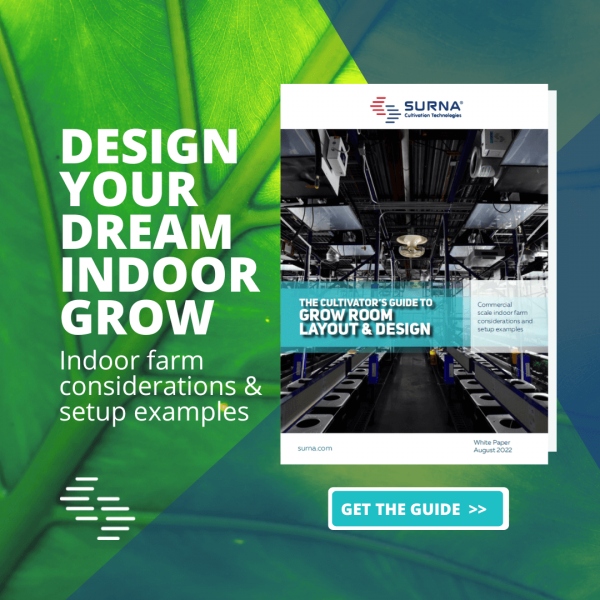Every day, the cannabis industry changes as innovators introduce amazing new ideas and products. We see this first hand both at our own company and through our customers that work every day to bring quality products to the market. These innovations take dedication which is why we are especially excited about one of our own innovators today.
Our New Product Development Engineer, Amanda Luketa, passed the LEED AP Building Design and Construction Exam, joining Technical Advisor, Troy Rippe, as our second LEED Accredited Professional (AP) on Surna staff. We are beyond proud of Amanda for her hard work and dedication to environmentalism and efficiency.
For those who are unfamiliar with LEED, or Leadership in Energy and Environmental Design, it is the standard for efficiency in building design. Currently, LEED is the most widely used system for rating green buildings in the world and has become a symbol of sustainability. They offer a framework and certification process for designing and building the most efficient and cost-saving structures. Currently, there are four LEED certification levels a building can receive – LEED certified, LEED Silver, LEED Gold and LEED Platinum— based on specific metrics and these can be applied to both new builds as well as retrofits of existing structures.
While LEED is a widely recognized standard, it is no small feat for Amanda to earn the title of AP. Amanda was required to first pass the Green Associate Exam, which demonstrates a general understanding of LEED principles, before moving on to the Building Design and Construction Exam. The process is long and intense and by passing these exams to become a LEED AP, Amanda has demonstrated an intimate understanding of the various requirements for designing for efficiency.
Using a LEED AP in designing and engineering your building is not a requirement for obtaining a LEED certification, though it is highly recommended. That’s because a building can only be LEED certified after demonstrating its efficiency in various categories and subcategories, all organized into a more than 900-page manual. As one can imagine, this means a lot of moving parts and strategizing. By choosing a LEED AP, organizations streamline the process, saving time and money. And if that’s not enough of an incentive, LEED actually rewards organizations that use their APs with additional points, improving the probability of gaining certification.
It may be a long process, but opting for LEED certified structures has many benefits. The first and most obvious benefit is that choosing a LEED building is a more environmentally conscious strategy than its alternatives. This efficiency also has monetary benefits by reducing energy and/or water consumption and, thus, operating costs. If those saving aren’t enough to entice you, some utility providers even offer rebates to customers who have LEED certified structures, further raising your ROI. And for those organizations who benefit from their focus on sustainability, opting for a LEED certified building can demonstrate their commitment to being green to customers or even local licensing authorities which is becoming very important in states such as California
For Surna in particular, we’re excited about Amanda’s accomplishment not only because of how hard she worked but also because we know how important efficient design is in this competitive market. Cultivation is incredibly energy intensive, resulting in high operating costs and often inviting criticism from local communities which can make licensing tricky. This is why we have been dedicated to offering the most cost effective and efficient technologies available since the very beginning. By having LEED AP on staff, we are able to offer additional efficiency options to help our customers reduce operating costs, make their applications stand out and develop better community relations. Get in touch with us today to learn how we can help make your facility the most efficient!
Congratulations Amanda! We’re so proud of you!

